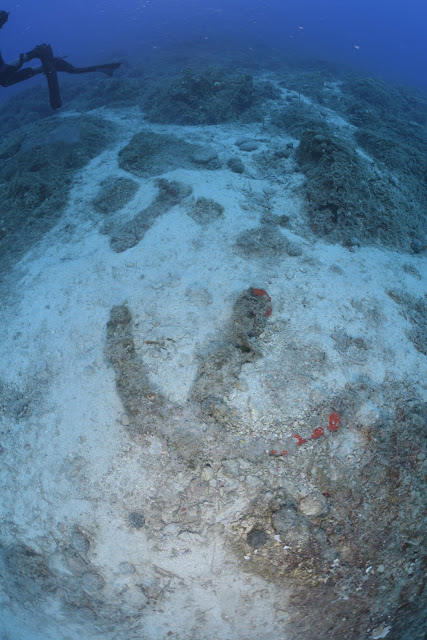An underwater survey along the south coast of Naxos was conducted for the second year running by the Ephorate of Underwater Antiquities in collaboration with the Norwegian Institute at Athens, as part of a three year collaborative programme. As mentioned in a relevant announcement by the Ministry of Culture and Sports, the survey is particularly interesting since it is the first time that the underwater area of south Naxos from Alyko to Panormos is being explored systematically. This is an isolated region, ideal for the exploration of harbours that remain largely unharmed by modern interventions.
 |
| From the underwater surveys on the south coast of Naxos [Credit: Ephorate of Underwater Antiquities/ Oslo University] |
Specifically, 5 stone anchors were pulled up from the Agios Sozon Bay, southeast of the Moni Peninsular as well as examples of ceramics to be diagnosed, such as an amphora of the Late Classical period, utility vases from the Classical period, the whole section of a clay conduit of the Late Roman/Byzantine times et al. which indicate that the natural harbour was used for anchorage from the Archaic to the Byzantine period. Iron anchors were also found in the same bay as well as anchor components (tows).
 |
| From the underwater surveys on the south coast of Naxos [Credit: Ephorate of Underwater Antiquities/ Oslo University] |
In the Panormos bay there are 15 piles of ballast which prove that ships were being loaded and unloaded in the region, while the ceramic finds point to the use of this location mainly during the Roman and Late Roman period.
 |
| From the underwater surveys on the south coast of Naxos [Credit: Ephorate of Underwater Antiquities/ Oslo University] |
The research programme will yield fresh data on how isolated districts, without obvious coastal facilities, were connected with the sea and by extension with the world of the Mediterranean. It can also give new information on unknown coastal locations that were used as links between the settlements of the island’s hinterland and the sea. The study will reveal whether these natural harbours were only used by specific settlements at specific times or whether they remained unaffected by habitation changes in the inland settlements.
 |
| Finds from the underwater surveys on the south coast of Naxos [Credit: Ephorate of Underwater Antiquities/ Oslo University] |
Source: Archaiologia Online [November 07, 2017]
